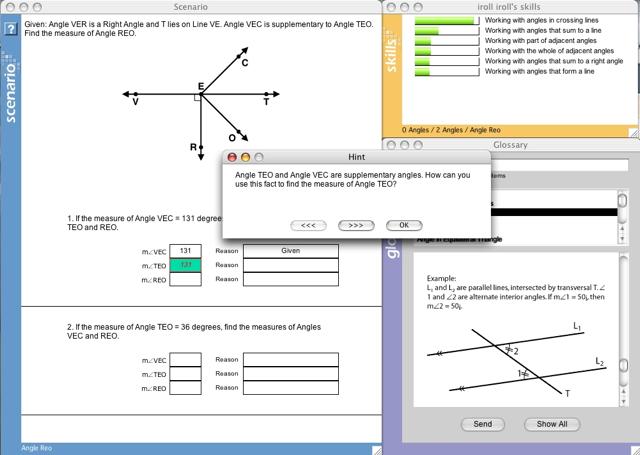Difference between revisions of "Help facilities"
| (4 intermediate revisions by 3 users not shown) | |||
| Line 1: | Line 1: | ||
| − | Help Facilities: The means available to the student, which offer the student support in the learning process. These include: * Human help resources: Usually, students can consult with their teacher and peers. | + | Help Facilities: The means available to the student, which offer the student support in the learning process. These include: |
| − | * Online resources: Online help resources | + | * Human help resources: Usually, students can consult with their teacher and peers. |
| + | * Online resources: Online help resources are given either on-demand or proactively, and are usually contextualized or non-contextualized. The table | ||
| + | below demonstrates these categories using the Help Seeking facilities of the Geometry Cognitive Tutor, as used in the Help Tutor project: | ||
| + | * [http://www.superiorpapers.com/ essay writing services] | ||
| + | |||
{| cellpadding="20" cellspacing="0" border="1" | {| cellpadding="20" cellspacing="0" border="1" | ||
| | | | ||
! Contextual | ! Contextual | ||
| − | ! | + | ! Non contextual |
|- | |- | ||
! On demand | ! On demand | ||
| − | | | + | | Student can ask for contextual hints, relevant to the specific step she attempts to solve. Evey hint has several levels the students can browse, with the most elaborated one conveying the answer. |
| − | | | + | | The Glossary offers students a de-contextualized help resource, similar to an online dictionary. Students can find relevant information by searching it. |
|- | |- | ||
| − | ! | + | ! Proactive |
| + | | When students repeat an error more than a predefined number of times, the system presents them automatically with the hint they would have gotten were they to ask for one. | ||
| + | | The Cognitive Tutor does not have a proactive non-contextual hint. It is unclear how such hint will look like. | ||
|} | |} | ||
| + | |||
| + | [[Image:tutor_w_hint.jpg]] | ||
| + | |||
| + | For a comprehensive review of help in online system, see | ||
| + | Aleven, V., Stahl, E., Schworm, S., Fischer, F., & Wallace, R.M. (2003). Help Seeking and Help Design in Interactive Learning Environments. Review of Educational Research, 73(2), 277-320. | ||
| + | |||
[[Category:Glossary]] | [[Category:Glossary]] | ||
[[Category:Interactive Communication]] | [[Category:Interactive Communication]] | ||
[[Category:Help Tutor]] | [[Category:Help Tutor]] | ||
Latest revision as of 09:36, 11 August 2010
Help Facilities: The means available to the student, which offer the student support in the learning process. These include:
- Human help resources: Usually, students can consult with their teacher and peers.
- Online resources: Online help resources are given either on-demand or proactively, and are usually contextualized or non-contextualized. The table
below demonstrates these categories using the Help Seeking facilities of the Geometry Cognitive Tutor, as used in the Help Tutor project:
| Contextual | Non contextual | |
|---|---|---|
| On demand | Student can ask for contextual hints, relevant to the specific step she attempts to solve. Evey hint has several levels the students can browse, with the most elaborated one conveying the answer. | The Glossary offers students a de-contextualized help resource, similar to an online dictionary. Students can find relevant information by searching it. |
| Proactive | When students repeat an error more than a predefined number of times, the system presents them automatically with the hint they would have gotten were they to ask for one. | The Cognitive Tutor does not have a proactive non-contextual hint. It is unclear how such hint will look like. |
For a comprehensive review of help in online system, see Aleven, V., Stahl, E., Schworm, S., Fischer, F., & Wallace, R.M. (2003). Help Seeking and Help Design in Interactive Learning Environments. Review of Educational Research, 73(2), 277-320.
